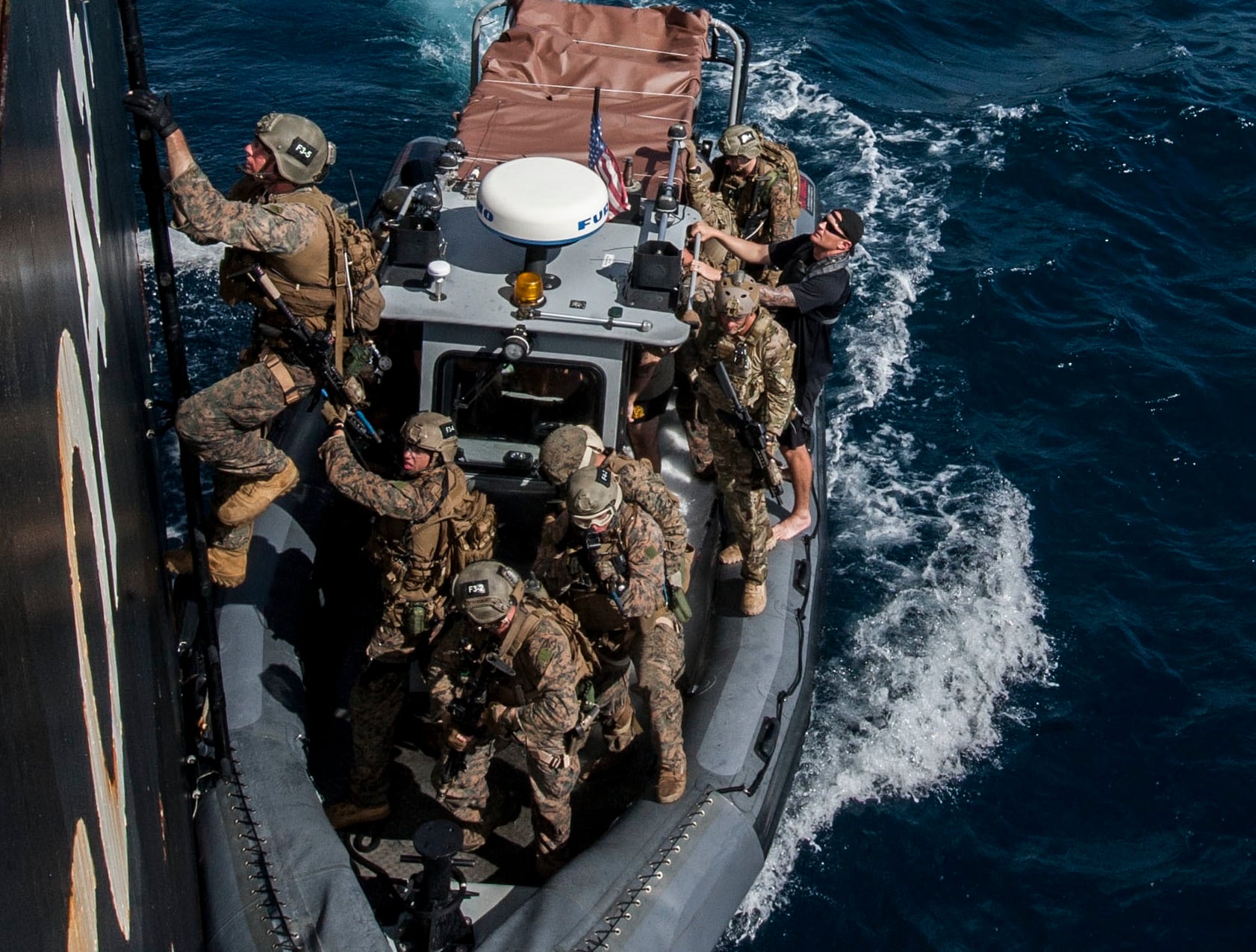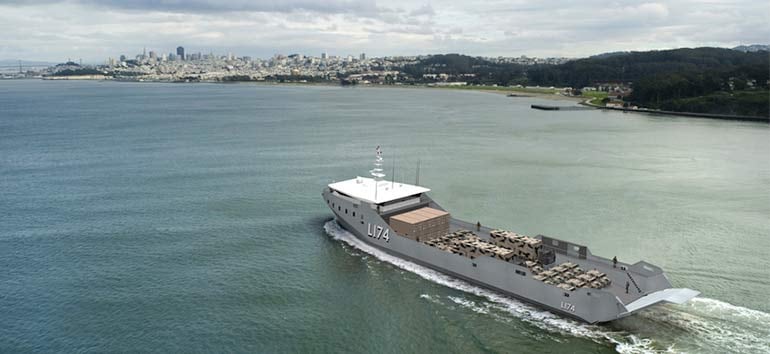Marine leaders have been pushing since for the first light amphibious warship to be procured by 2023.
But in the service’s recent combined budget request with the Navy, the Corps isn’t expecting to get the ship for at least another two years. And the Corps only is likely to get four of them in inventory by 2027 if the current plan holds.
The light amphibious warship is the Corps’ answer to moving a lot of Marines in small teams from deep water to the close-to-shore littoral zones and even conducting beach landings.
Far cheaper than the larger amphibious ships that Marines usually take to combat, the light amphibious warship is expected to fill a gap between big-deck ships and small landing craft. Without it, Marines face serious obstacles in getting on land. That’s critical as the Corps has billed itself as the Navy’s ship-killing, adversary-harassing force.
Each light amphibious warship is expected to carry up to 75 Marines. The Corps wants to use a host of them to move its newest formation creation, the Marine littoral regiment, around the littoral battlespace.
That’s going to be hard when even by 2027 it will only have enough space aboard potentially four new vessels for fewer than three reduced-strength, unsupported infantry companies.
To meet Marine war planning expectations, they’ll likely eventually need enough light amphibious warships to transport at least three Marine littoral regiments.
But the Marine Corps will have to wait at least until fiscal year 2025, according to the military’s proposed fiscal year 2023 budget released on Monday. The Navy expects to start funding builds of the light amphibious warship with one in 2025, another in 2026 and two in 2027.
RELATED

Marine Corps Commandant Gen. David Berger said at the National Defense Industrial Association’s annual Expeditionary Warfare Conference in February that the traditional amphib ships and the new light amphibious warship concept complement each other. They will work in tandem to bring Marines to the fight.
More details on budget specifics will be available in the coming weeks. But the Pentagon’s initial budget request gives glimpses as to what will happen with Marines and ships in the near- to mid-term.
At a briefing with media on Monday, Navy Rear Adm. John Gumbleton, deputy assistant secretary of the Navy for budget, said that both the Navy and Marine Corps were working to get the “requirements tight” for the light amphibious warship.
He pointed to funding in research and development rather than procurement in the near term.
While still in the design phase, the Marines are asking to build a 200- to 400-foot ship with a maximum draft of 12 feet. The ship must be able to carry between 3,000 and 4,000 tons and 75 Marines with a Navy crew of about 40 sailors.
That program saw $20 million in funding in fiscal 2021, $13 million in fiscal 2022 and hovers around $12 million for the pending 2023 budget.
That’s behind the timeline in the Corps’ goal of having a light amphibious warship funded by 2023 and deployable soon after.
The Navy’s $27.9 billion shipbuilding proposal expects to fund nine new ship builds. More than half of that money is taken up by incremental funding for the Ford-class aircraft carrier, the Columbia-class and the Virginia-class nuclear submarines.
Of what remains in the purse, a handful of Marine-focused priorities look to get funding, though not at quite at the level or pace Corps leadership has pushed for in recent years.
Two of those ― the America class amphibious assault ship-LHA 6 and the San Antonio class amphibious transport dock or LPD 17 Flight II ― are on deck for funding.
Connectors and keeping ships floating
In existing construction or serve life extension, the Navy looks to pay for two landing craft air cushion and two ship-to-shore connectors in 2023, also key to Marine gear and troop movement in the littorals.
The Marines’ F-35C Joint Strike Fighter purchases dropped to nine for the 2023 budget, but would resume at 15 each year until fiscal 2027. The Corps purchased 16 in fiscal 2021 and 15 in fiscal 2022.
Purchases of the F-35B are consistent with 15 planned in the fiscal 2023 budget and 16 each year until 2026, with 17 in fiscal 2027. In the 2022 budget, Marines bought 17 of the “B” variant, having purchased 10 in fiscal 2021.
Both Navy and Marine Corps aviators are getting a new trainer, the Corps will see four such aircraft in this 2023 budget and 22 total over the next two years.
KC-130J buys are steady at five and another two planned for fiscal 2024. The Corps bought 11 over the previous two fiscal years.
Marine aviators are likely to see many more CH-53K King Stallion helicopters in the coming years.
The proposal lays out a plan to buy 10, with another 78 spread out over the next four years.
Research and development spending on the King Stallion continues, though lower than in years past. Current figures in the budget call for $220 million, down from $257 million in fiscal 2022.
It appears the Marines are done buying MV-22 Ospreys for the foreseeable future.
Two years ago, the Corps purchased three, and in 2022, it was given funding for nine. But no future purchases are planned within this budget through fiscal 2027.
Todd South has written about crime, courts, government and the military for multiple publications since 2004 and was named a 2014 Pulitzer finalist for a co-written project on witness intimidation. Todd is a Marine veteran of the Iraq War.





